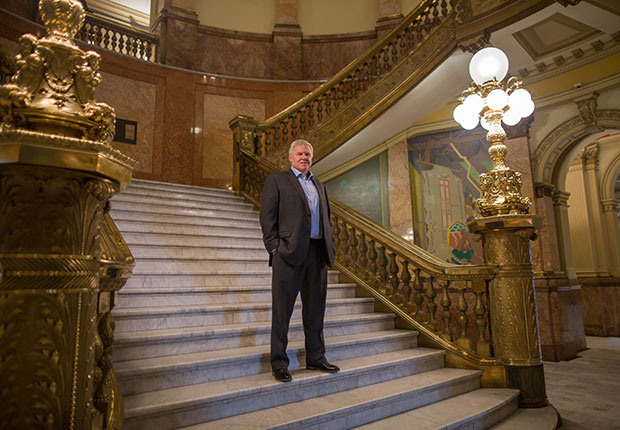AARP Hearing Center

By Cynthia Pasquale
Within 12 years, it’s likely that 1 in 5 Coloradans will be 65 or older. Wade Buchanan says the aging trend will have a positive impact on the state, but he doesn’t discount the challenges, either.
In January, Buchanan was appointed the state’s senior adviser on aging, a new position in Democratic Gov. John Hickenlooper’s office. His task: coordinate policies that affect older residents and work with state and local governments, foundations, health care providers and others on better ways to deal with the needs of an aging population.
“My job is a broad one,” said Buchanan, 57. “It basically comes down to trying to help the state figure out how it can best address this challenge and make sure the state and the various sectors of our society are prepared.”
Buchanan was a top adviser to Gov. Roy Romer (D) in the 1980s and 1990s and was president of the Bell Policy Center, a public policy think tank. He also served on the Strategic Action Planning Group on Aging (SAPGA), created by the state legislature in 2015 to study the impact of the aging population and to create a strategic plan to address the issue.
“People often become aware of aging issues in a negative way—someone is sick or in a difficult transition,” Buchanan said. “But people are living longer and healthier lives up to those points, and this is about how we take full advantage of that.”
Older people also contribute significantly to the state economy. A survey last year commissioned by AARP found that Coloradans age 50-plus were 32 percent of the population but contributed 42 percent to the state’s GDP.
SAPGA identified several looming needs facing older people, including affordable housing, transportation and access to health care.
“As you go to more sparsely populated parts of the state or mountain communities, the difficulty in getting to places where health care is available is a real problem,” said Ben Moultrie, 70, a member of SAPGA and the state Commission on Aging.
Need for Coordinating Programs
A Older people are served by many state programs, but there’s a need for better coordination, he said. Some residents may not know about programs, and overlap or duplication is also possible. Part of Buchanan’s job is to address that.
“Colorado has elevated this job so that we can think about the issues not in individual pieces but as a whole,” Buchanan said. “Colorado is ahead of the game on this.”
He plans to help state and local governments coordinate their efforts. The challenge is large, because much of the state’s infrastructure is geared toward a younger population.
“Most of the structures we have in place now, from our transportation systems to our housing stock to our health care systems, are designed for a society that will never exist again—a society where most of us are under 40,” Buchanan said.
All state programs face tight funding limits, he added, so giving aging issues a higher profile may not lead to more spending.
But his appointment puts a focus on these issues and will spur planning, said Kelli Fritts, AARP Colorado advocacy director.
“This is exciting because it’s about aging, aging in place and having the resources in our community to do that with dignity, because now we’ll have a road map,” Fritts said.
Cynthia Pasquale is a writer living in Denver.































































